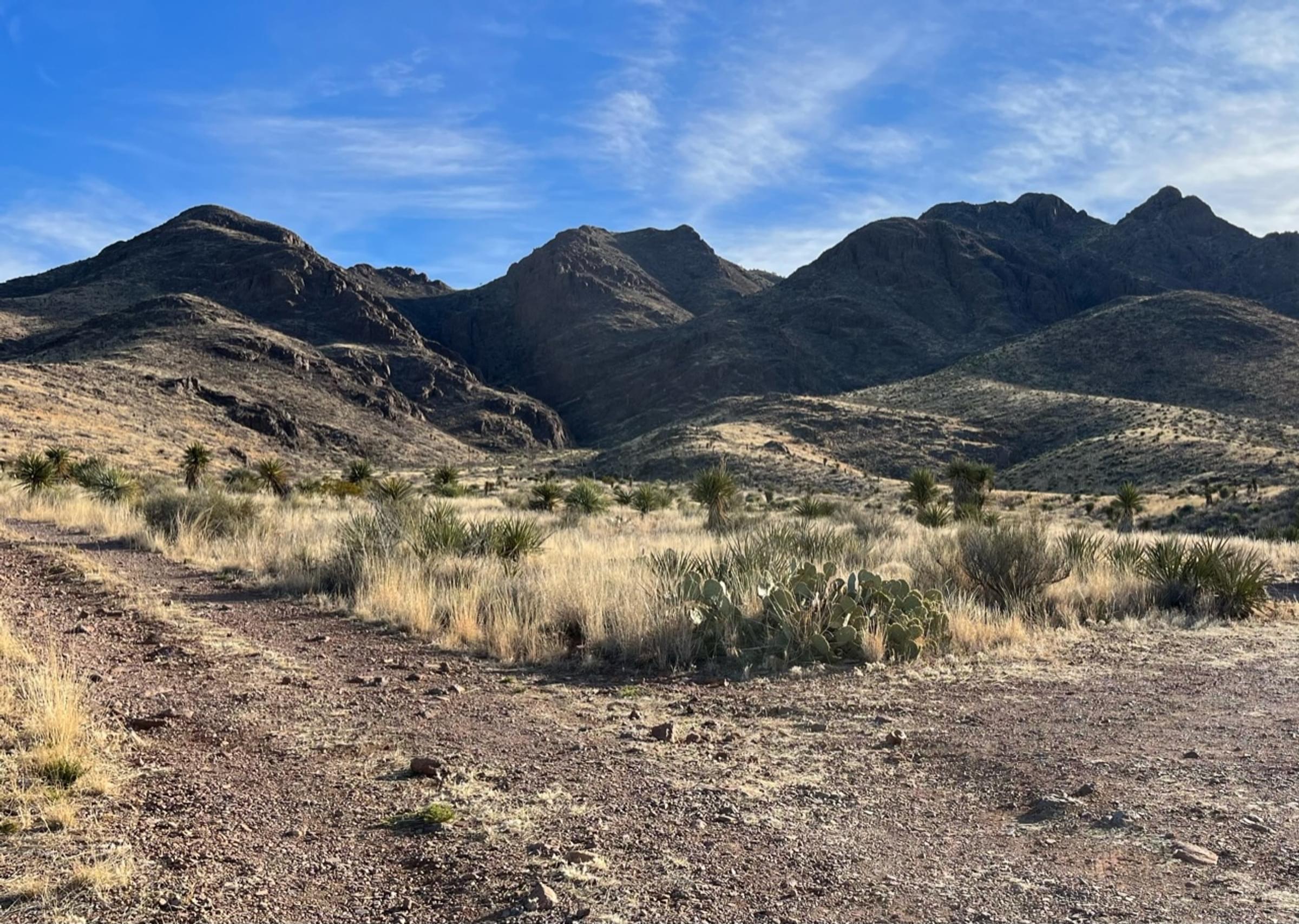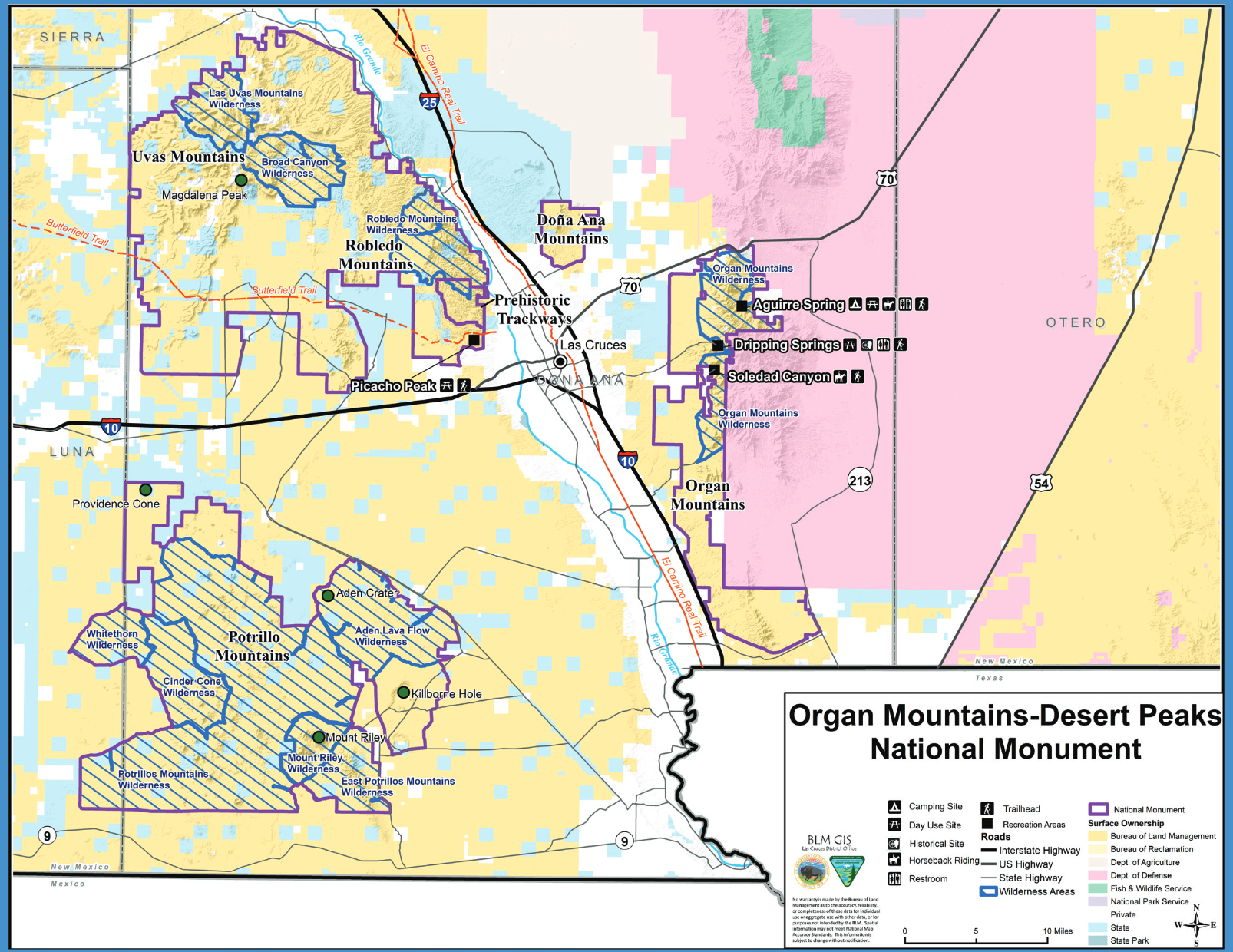Organ Mountains-Desert Peaks NM--Achenbach Canyon Trail

Organ Mountains-Desert Peaks NM--Achenbach Canyon Trail
Las Cruces, New Mexico 88011
Organ Mountains-Desert Peaks National Monument Official WebsiteOrgan Mountains-Desert Peaks National Monument brochure and map
Tips for Birding
eBird species-frequency bar charts for this hotspot possibly include observations not just along Achenbach Canyon Trail, but along Cuates (also known as Mars) Canyon Trail as well; the two trails share the same trailhead parking area and Achenbach will pop up as the first suggested hotspot to mobile users in the area. Including Cuates Canyon Trail observations for this hotspot rather than recording for the general Organ Mountains-Desert Peaks NM hotspot is not strictly appropriate.
Birds of Interest
A small dam lies just outside the Study Area, and though rarely holding water, should be approached cautiously as the surrounding area offers some of the trail’s denser birding. Spotted Towhee may often be found here.
About this Location
Despite what you might read on various trail hiking websites, the Achenbach Canyon Trail is not a loop trail nor even a publicly accessible lollipop route. Whereas the trail may appear on some maps to have a lollipop form, the eastern arc of the lollipop lies on Fort Bliss property, to which unauthorized entry is prohibited. Therefore, the publicly accessible portion of the trail is out-and-back. The hike from the trailhead to where the trail forks (beginning the lollipop loop) is about a mile and a quarter, with an ascent of 550 feet. From there to Fort Bliss’s property line is about a third mile if you take the shorter north fork, but don’t expect the boundary to be well signed.
See Hiking New Mexico’s Achenbach Canyon by Root Gorelick for a route and terrain description, including rich flora detail and access information. Other than possible hazards of unexploded ordnance and live firing that may occur on Fort Bliss property, at least one person has died from a fall while attempting to hike that trail portion. Probably because almost all of the publicly accessible trail lies within the Peña Blanca Wilderness Study Area, the trail is not intensively maintained. There is no signage except that directing you from Ladera Canyon Road to the trailhead parking area, from which the Achenbach Trail heads east-southeast, and, near the point where the trail enters the Study Area, a composite post indicating no bicycles allowed. However, up to where the trail forks, it is an obvious, though narrow, path.
About Organ Mountains-Desert Peaks National Monument
See all hotspots at Organ Mountains-Desert Peaks National Monument
The Organ Mountains-Desert Peaks National Monument was established to protect significant prehistoric, historic, geologic, and biologic resources of scientific interest, and includes four areas: the Organ Mountains, Desert Peaks, Potrillo Mountains, and Doña Ana Mountains.
The Organ Mountains are a steep, angular mountain range with rocky spires that jut majestically above the Chihuahuan Desert floor to an elevation of 9,000 feet. This picturesque area of rocky peaks, narrow canyons, and open woodlands ranges from Chihuahuan Desert habitat to ponderosa pine in the highest elevations. Located adjacent to and on the east side of Las Cruces, this area provides opportunities for photography, hiking, horseback riding, mountain biking, camping, and wildlife viewing.
The Desert Peaks include the Robledo Mountains, Sierra de las Uvas, and Doña Ana Mountains, characterized by desert mountains rising steeply from flat plains.
The Potrillo Mountains are the most remote section of the Monument located a distance to the southwest from Las Cruces and are comprised of a volcanic landscape of cinder cones, lava flows, and craters.
The Doña Ana Mountains have extensive pedestrian trails, equestrian trails, mountain bike trails, rock climbing routes, and some limited routes available for motorized use.
Notable Trails
The Visit Las Cruces website has a description of a hike using the Achenbach Canyon Trail.
Features
Restrooms on site
Wheelchair accessible trail
Entrance fee
Roadside viewing
Content from Organ Mountains-Desert Peaks National Monument Official Website and John Montgomery
Last updated March 26, 2023
